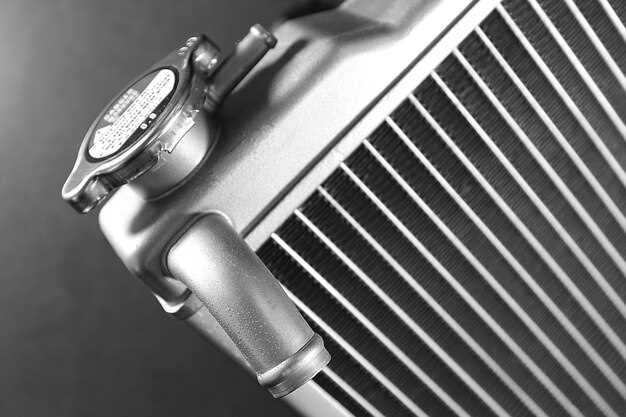
Lowering your car is a common modification among automotive enthusiasts, often driven by a desire for improved aesthetics and enhanced performance. Many drivers see a lowered vehicle as a symbol of style and individuality, creating a distinct visual appeal that sets their car apart from the rest. However, this modification comes with both advantages and disadvantages that potential modifiers should carefully consider.
On the positive side, lowering a car can lead to improved handling and stability. By reducing the center of gravity, the vehicle can navigate corners more effectively, providing a thrilling driving experience. Additionally, a lowered suspension can significantly enhance the overall aesthetics of the car, giving it a sleek and aggressive stance that many find desirable. These benefits often result in heightened enjoyment for the driver and greater admiration from onlookers.
However, the decision to lower a car is not without its drawbacks. A significant concern is the potential for decreased ride quality; a stiffer suspension system can lead to a harsher driving experience, especially on uneven road surfaces. Furthermore, lowering a vehicle can result in clearance issues, making it easier for the car to bottom out on bumps or driveways, causing damage over time. It is crucial for car enthusiasts to weigh these factors against the visual and performance gains that come with lowering their vehicle.
Impact on Vehicle Handling and Performance

Lowering your car can have significant effects on its handling and performance. These changes are often both beneficial and detrimental, depending on various factors such as the extent of the modification and the vehicle’s intended use.
One of the primary advantages of lowering a vehicle is improved handling. A lower center of gravity stabilizes the car during cornering, reducing body roll and enhancing grip. Here are some key points to consider:
- Increased Stiffness: Lowered cars often come with upgraded suspension components, which can provide a firmer ride and better feedback.
- Reduced Aerodynamic Drag: A lower ride height can help to improve aerodynamics, leading to better high-speed stability.
- Improved Tire Contact: Lowering can lead to better tire contact with the road, which can enhance traction in various driving conditions.
However, there are also notable disadvantages that come with lowering a vehicle:
- Ride Comfort: A stiffer suspension may sacrifice ride comfort, making the vehicle less suitable for daily driving.
- Potential Scraping: Reduced ride height can lead to scraping on uneven surfaces, speed bumps, and driveways, which can damage the vehicle.
- Alignment Issues: Lowering can affect wheel alignment, causing uneven tire wear and potentially leading to further performance issues.
Additionally, the aesthetic appeal of a lowered car can enhance its overall appearance, giving it a sportier look that many enthusiasts appreciate. However, the trade-offs in handling and ride quality must be carefully weighed against these aesthetic benefits.
Ultimately, whether lowering a vehicle is advantageous or disadvantageous depends on individual preferences and driving habits. Enthusiasts seeking improved cornering performance may find it to be a worthwhile modification, while casual drivers might prioritize comfort and practicality.
Effects on Tire Wear and Suspension Components
Lowering your car can have significant implications for tire wear and the performance of suspension components. When a vehicle is lowered, the alignment of the wheels often changes, which can lead to uneven tire wear. The angle at which the tires meet the road, known as camber, might become more negative, increasing wear on the inner edges of the tires. Drivers may notice that tires wear out faster than expected, necessitating more frequent replacements.
Additionally, lowering a vehicle typically involves upgrading or modifying suspension components. Stock suspension systems are designed with specific ride heights in mind, and lowering can lead to excessive stress on parts such as struts, shocks, and springs. This can result in premature failure of these components, leading to costly repairs or replacements.
Another important aspect is the effect on ride comfort and handling. A lower ride height can improve handling characteristics, as the center of gravity is reduced, enhancing stability during cornering. However, this can also result in a harsher ride due to decreased suspension travel. Drivers may experience more jarring from road imperfections, which can affect overall vehicle control and passenger comfort.
In summary, while lowering a car can enhance aesthetics and handling, it is crucial to consider the impact on tire wear and suspension components. Proper alignment and regular maintenance are essential to mitigate negative effects and ensure longevity and performance of both tires and suspension systems.
Aesthetic Considerations and Legal Implications

Lowering your car can significantly enhance its aesthetic appeal, giving it a more aggressive and sporty look. A well-executed suspension modification can improve the overall stance and visual harmony of the vehicle. Many car enthusiasts appreciate the lowered profile, as it often conveys a sense of performance and style. However, these aesthetic advantages must be weighed against potential legal implications.
In many jurisdictions, lowering a vehicle can lead to issues with compliance to local vehicle regulations. Most regions have specific laws regarding ride height, which are intended to ensure safety and proper function of vehicle systems. A suspension that is too low can result in increased risk of damage, particularly to the undercarriage, and may also impair the vehicle’s visibility on the road. Consequently, vehicle owners should be fully aware of local laws and regulations to avoid fines or mandatory reinstatement of the original suspension height.
Additionally, modifications in suspension can affect handling characteristics, which can have legal repercussions if the vehicle becomes unsafe to operate. Insurance companies may also scrutinize altered vehicles; in some cases, failure to disclose such modifications can void insurance coverage. Therefore, while the pursuit of aesthetic appeal can be rewarding, it is crucial to perform adequate research and comply with regulations to ensure both legal compliance and safety on the road.



